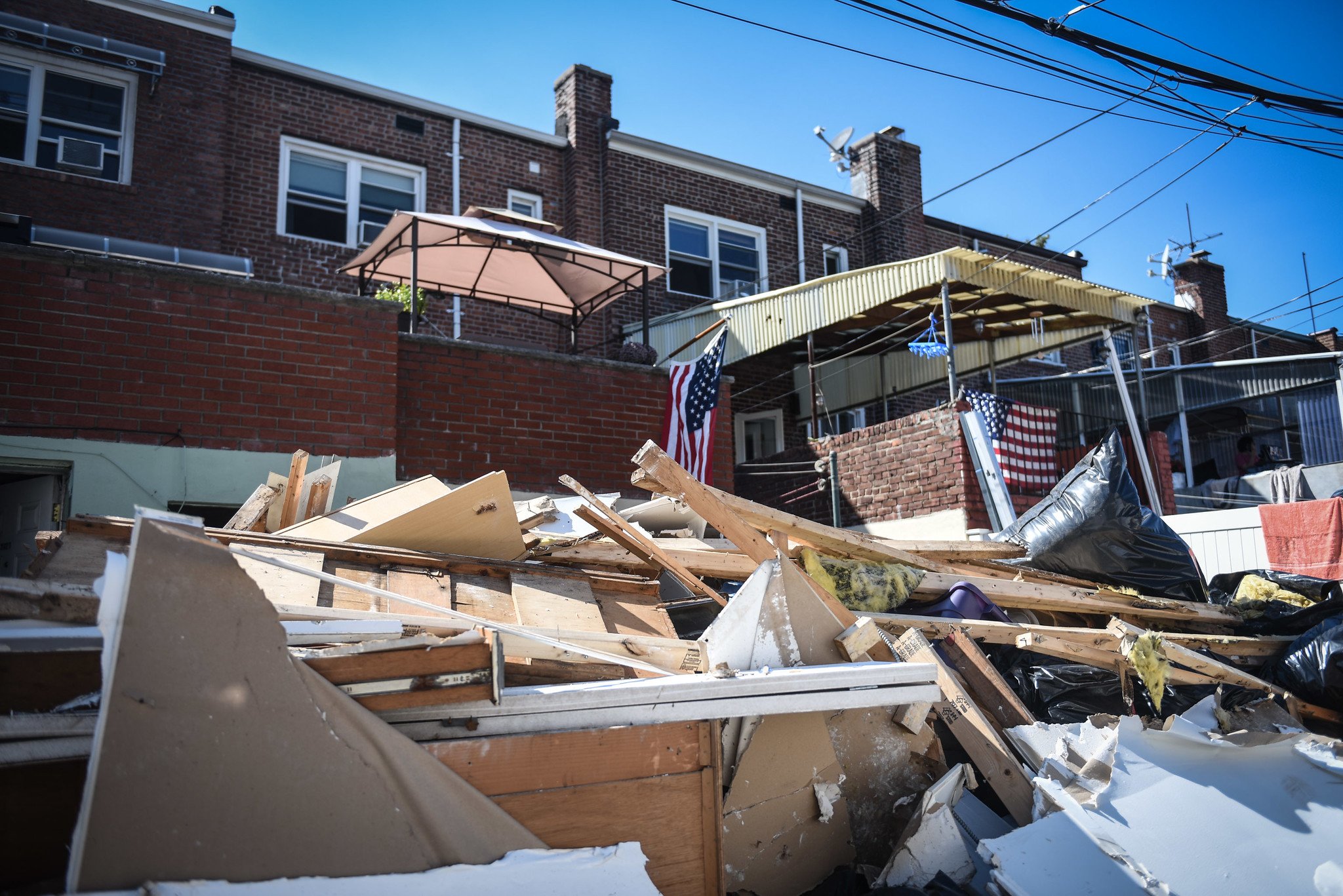Lawmakers urge attention to Queens flooding
/A group of Queens elected officials are urging the state to consider flood risk as a marker for an environmental justice program. Photo via Michael Appleton/Mayoral Photography Office
By Rachel Vick
Facing increasing flooding throughout Queens, a group of elected officials are urging the state’s Department of Environmental Conservation to take a closer look at the borough’s flood risk as they map out the future of green energy throughout New York.
Citing the rising frequency and intensity of flooding in the World’s Borough, the elected officials urged the agency in a letter to include the risk in its criteria for the Disadvantaged Communities program, which is being finalized by the Climate Justice Working Group. Included in the letter is a request to shore up Queens’ infrastructure to prevent future flood disasters.
Signatories to the Aug. 4 letter include Queens Borough President Donovan Richards; State Senators Jessica Ramos, John Liu and Leroy Comrie; Assemblymembers Brian Barnwell, Catalina Cruz, Andrew Hevesi, David Weprin, Jenifer Rajkumar and Ed Braunstein; and Councilmembers Linda Lee, Lynn Schulman, James Gennaro and Sandra Ung.
“Last year, the remnants of Hurricane Ida struck New York City and left a trail of disaster,” the elected officials wrote. “Many of the victims were from lower income and immigrant backgrounds and struggled to recover from the storm’s devastating effects.”
“To reduce the damage caused by future floods, our borough requires urgent infrastructure upgrades,” they continued. “Increasing stormwater management capacity will depend on how much Queens is able to benefit from the Disadvantaged Communities program.”
Thousands of Queens residents live in low lying flood prone areas including parts of Flushing, Rego Park, Elmhurst, Forest Hills, according to the New York City Flood Hazard Mapper. That number is projected to increase in the coming decades with sea level rise.
The DEC program is designed to ensure disadvantaged communities, including areas that are vulnerable to the impacts of climate change and consist of low and moderate income households, are the first to benefit in the transition to clean energy sources. Designations are made by census tract.
The state is required to invest or direct resources to ensure disadvantaged communities receive at least 35 percent of clean energy and energy efficiency benefits.
For the borough’s residents, the impacts of flooding remain fresh — from the impact of Superstorm Sandy, streets waterlogged from heavy rain or high tides and Hurricane Ida, which happened a year ago this week.
At least 11 people from the borough were killed in floods from the Sept. 1, 2021 storm. Six were members of Meng’s central Queens district.
“Despite so much destruction and hardship, much of the borough is still susceptible to flood damages,” she said. “We still have over two months remaining in this year’s Hurricane season and cannot afford to wait until another storm destroys our property, homes, and lives before we take action to protect our community.”
Two weeks after the letter was sent, all 4,703 New Yorkers who filed a negligence claim against the city for damage caused by sewage overflow were denied their claim by the city’s comptroller. According to letters obtained by THE CITY, the decision relied on a ruling from more than a century ago that gives municipalities a pass on liability for damage from “extraordinary and excessive rainfalls.”
Cruz, who represents Corona, Elmhurst and Jackson Heights, said the inclusion could play a critical role in helping Queens residents bounce back and recoup losses, including those “who found themselves at losing end of that claim with the comptroller's office.”
“I think the most pressing, most present issue, right now, is a lot of folks who will… need that inclusion are probably the same who had their claim denied by the comptroller’s office,” Cruz told the Eagle.
“We saw what Ida did to communities like ours, we are the kind of district where you'll have a gigantic gap of folks who during a natural disaster are left unattended for,” she added. “It's one of the reasons we had to beg the government for financial support to cover some of those folks, fight with FEMA and having them included in a program like this will make us ensuring folks will be supported much easier.”
DEC did not respond to request for comment.




